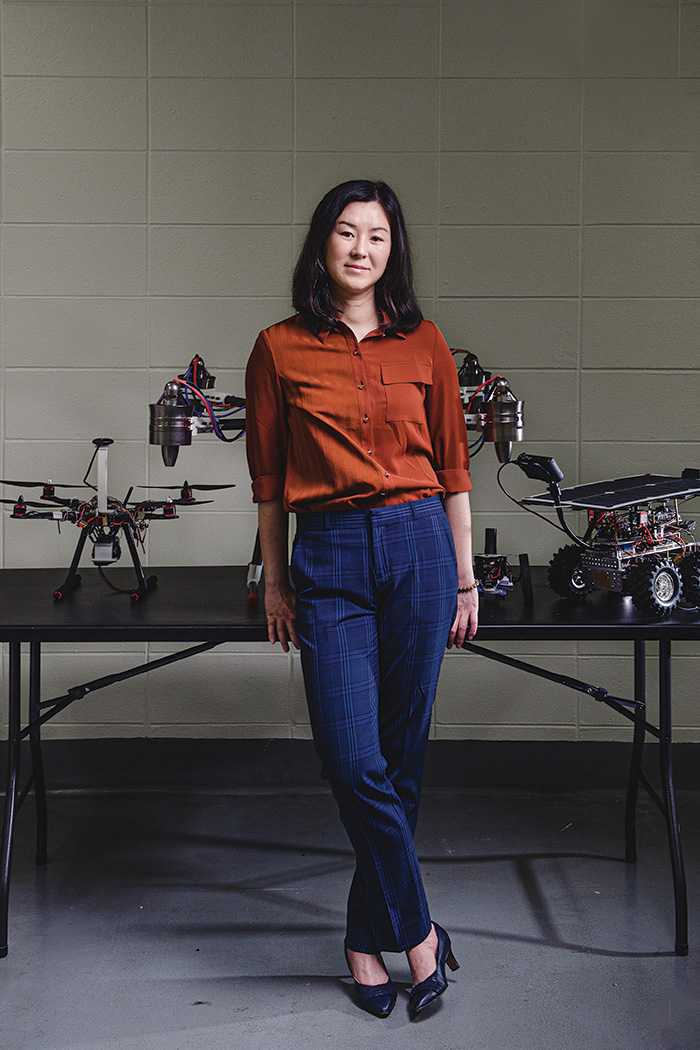
After the Perseverance rover successfully touched down on Mars in February 2021 following a landing sequence scientists refer to as "seven minutes of terror," the NASA mission was widely celebrated. It wasn't just that Perseverance is the largest, most advanced rover NASA has ever sent to another world. It's that landing on Mars is extremely difficult.
"The fact that NASA has already been successful landing rovers on the surface of Mars a couple of times is very exciting," said Ran Dai, associate professor of aeronautics and astronautics. "In the next 20 years, they plan to send astronauts to Mars. However, there are a number of technical and safety challenges that must be overcome before a manned mission would be possible."

Ran Dai, Associate Professor of Aeronautics and Astronautics
A spacecraft carrying a human crew has a much higher payload than a robotically operated rover. And once it reaches the Mars atmospheric boundary, the spacecraft would be traveling at supersonic speed without much time to decelerate the vehicle. Because the atmosphere around Mars is much thinner than that of Earth, crafts can't glide gently to its surface using only the atmospheric drag.
"Not only will these vehicles be decelerating from a super high speed to zero speed in a short period of time, the spacecraft also needs to land at a specific preassigned location," Dai said. "There may be areas that have already been explored by robots with stations set up. We don't want to just land a space vehicle anywhere on the Mars surface. So not only is there a need for controlled decelerations, but also precision."
As a craft enters the atmosphere, the first phase of deceleration is achieved through aerodynamic drag. During the second phase, the propulsion system is engaged to further decelerate the vehicle. With a robotic rover, once the craft reaches a certain altitude, a parachute can be deployed. With a high payload spacecraft, a parachute would not work. It would require significant fuel consumption to guide the propulsion system to generate the desired thrust necessary to manage a safe landing in an exact location.
"It's a complicated process," Dai said. "We have to consider all three objectives, deceleration, a highly precise landing and fuel consumption. That is our focus, to achieve the vehicle goal in the most optimal way and complete a safe and fuel efficient landing."
Dai received a three-year Early Career Faculty for Space Technology Research Grant from NASA to investigate precision planetary landing. The nearly $600,000 grant funds her research to develop an optimized spacecraft landing approach with powered descent.
Titled "Optimized Entry and Powered Descent Guidance for Precision Planetary Landing," the project aims to develop a highly implementable guidance approach that optimizes the end-to-end complete entry, powered descent and landing trajectories in real-time toward the fuel-optimal and precise landing.
"We work in close collaboration with NASA engineers," Dai said. "In addition to biweekly meetings with a NASA manager to report our progress, we also have an annual meeting with a group of NASA scientists and engineers from various branches."
Dai and her team have spent the past few years focused on designing computational algorithms to operate the guidance system. They are now building a small-scale test beta using drones to with an electronic propulsion system. The team will then implement their algorithms to see if they can create a simulated scenario that's similar to a Mars entry.
"For example, we can make our test beta climb to a high altitude and then dive down at a high speed," Dai said. "Then we can enable the guidance system and see if we can guide our customized vehicle to its assigned ending position. The test beta will help to verify our guidance algorithm. And maybe one day, our algorithms will be used in an actual Mars landing."